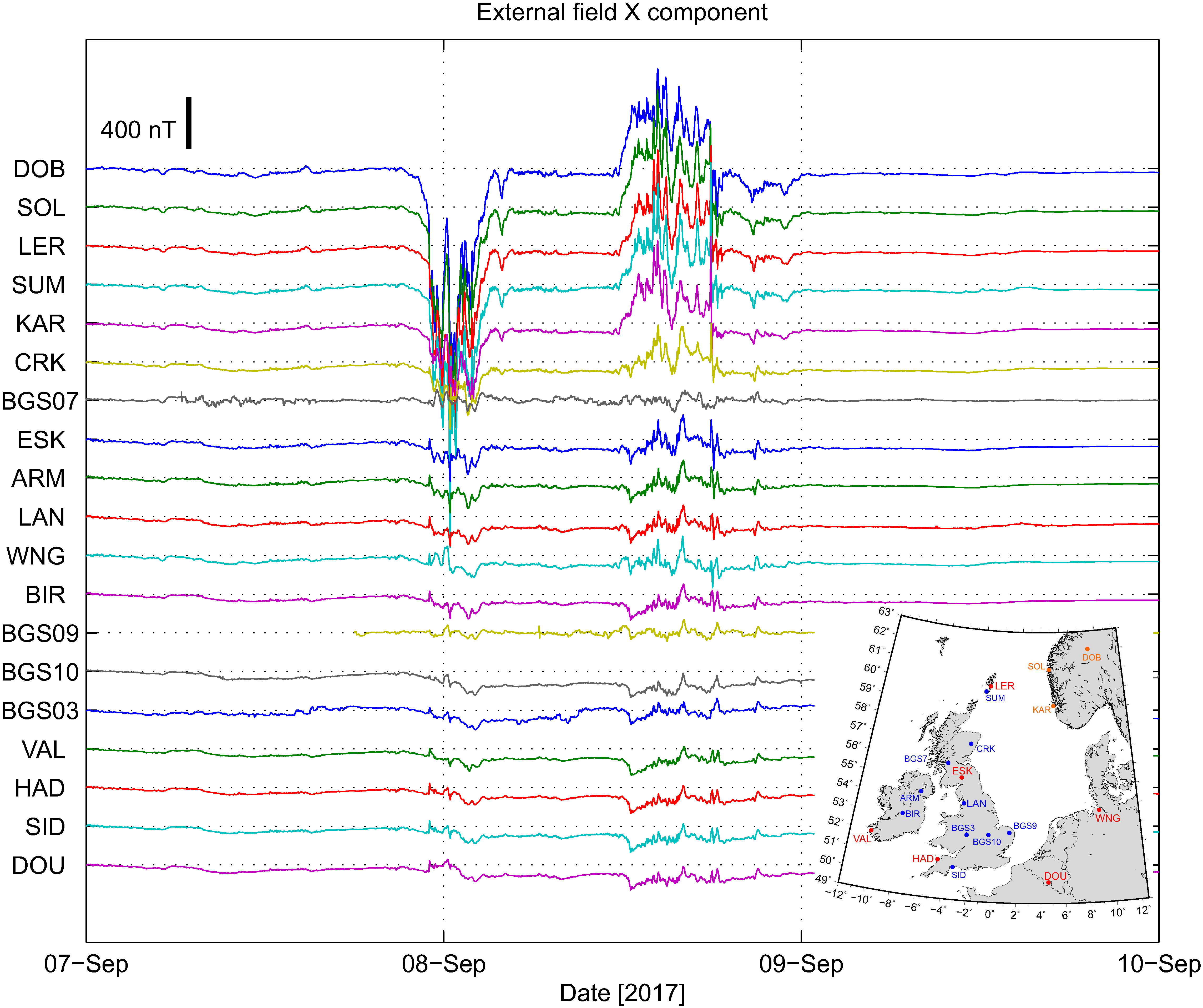MIST
Magnetosphere, Ionosphere and Solar-Terrestrial
Measuring a geomagnetic storm with a Raspberry Pi magnetometer
by Ciarán Beggan (British Geological Survey)
As computers such as the Raspberry Pi and geophysical sensors have become smaller and cheaper it is now possible to build a reasonably sensitive system which can detect and record the changes of the magnetic field caused by the Northern Lights (aurora). Though not as accurate as a scientific level instrument, the Raspberry Pi magnetometer costs around 1/100th the price (about £180 at 2019 prices) for around 1/100th the accuracy (~1.5 nanoTesla). However, this is sufficient to make interesting scientific measurements.
During 2017, a network of 9 Raspberry Pi magnetometers were deployed to schools around the UK from Benbecula to Norwich. On the 8th September 2017 a large geomagnetic storm was captured by the school magnetometers. Using these data and the array of other magnetometers around the North Sea, we were able to recreate the spatial and temporal changes of the magnetic field during the storm in great detail. The two phases of the storm (see Figure) show the westward (night time) and eastward (daytime) flow of the auroral electrojet currents in the ionosphere.
The results are given in more detail in our paper, but we have shown that it is possible to augment the existing professional network with citizen science sensors to fill in the ‘gaps’ for large geomagnetic storms.
Please see the paper below for more information:
Beggan, C. D. and Marple, S. R. (2018), Building a Raspberry Pi school magnetometer network in the UK, Geosci. Commun., 1, 25-34, https://doi.org/10.5194/gc-1-25-2018

Figure: Stackplot of the variation of the magnetic North component of the magnetic field for the geomagnetic storm of the 7-8th September 2017, ordered by latitude. Inset: Map of the locations of the variometers and observatories around the North Sea.